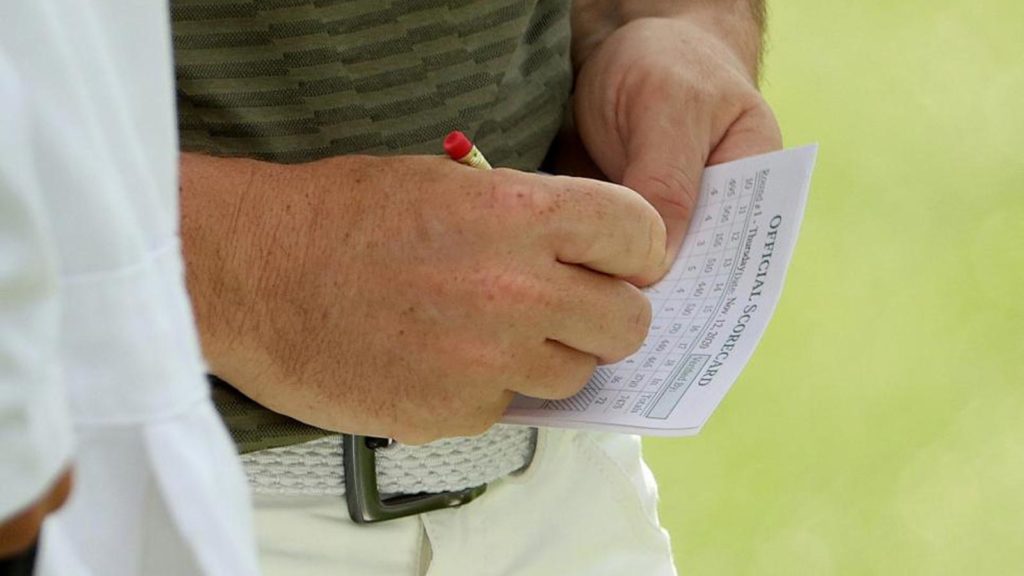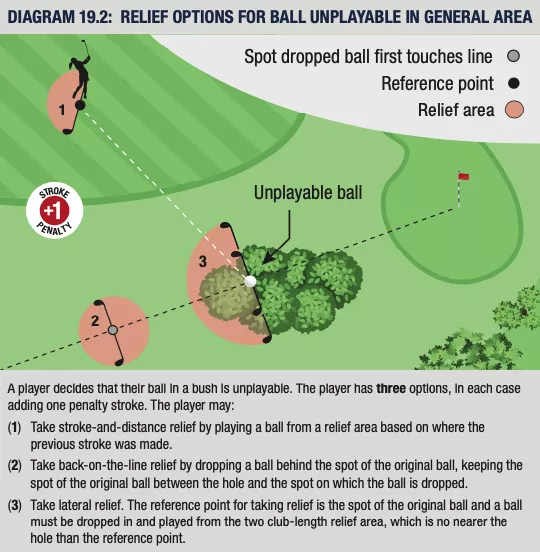The rule changes announced by the Royal and Ancient Golf Club (R&A) and the USGA – today that will come into effect on January 1, 2023 – are not as dramatic as in 2019, the last time the rules changed under the four-year cycle. But there are some decent moderations you should know about.
Grant Moir, director – Rules at The R&A, said Tuesday that he hopes it improves the overall enjoyment and fairness of golf for the next four years.
“It’s not quite the dramatic change of 2019, where everyone was having to completely relearn a lot of things, but we have been busy refining and hopefully improving in certain areas.” He also revealed the players’ edition of the rules would no longer be printed as the R&A is hoping to move golfers into the digital age, instead encouraging golfers to down the R&A’s Rules of Golf app.

Moir explained five of the biggest changes coming:
CHANGES FOR PLAYERS WITH DISABILITIES
The modifications to the Rules for players with disabilities have been made part of the Rules and are in effect for all players who are classified in the categories covered in Rule 25.
“This is very much bringing the modifications for players with disabilities, which have been with us for over 25 years but had to be introduced as a Local Rule, into the Rule book as new Rule 25. We continue to work closely with the community of players with disabilities and administrators of competitions involving those players and there was felt to be no great need for significant revision to the modifications themselves. The big push was to bring those Rules into the book so they become part of the mainstream of the Rules of Golf so that players without disabilities become familiar with them. In all our discussions with players in various categories of disabilities, really what they want is as few modifications as possible. This change means there’s no longer any need to ask if these modifications are in place – they will now be in place as a matter of course.”
HANDICAP USAGE IN STROKE PLAY
With the continued growth of score-posting technology following the adoption of the World Handicap System, players are no longer penalised for failing to put their handicap on their scorecard in stroke play. The committee will be responsible for ensuring the accuracy of each player’s handicap.

“Probably as a result of the challenges of Covid, there was more of an emphasis placed on electronic scoring. We’re not really suggesting that the scorecard will disappear, but the majority of scoring does now go through a computer terminal before and at the end of the round. Knowing that the handicap is correct in that physical inputting moment, it seems illogical to penalise the player if they happen to have got it wrong on the scorecard but the gross scores at the end of the day are correct. This amends Rule 3.3b(4).”
CLUB DAMAGED DURING ROUND
The Rule has been amended to allow a player to replace a club that is damaged during a round, provided the player did not damage it through abuse.

“Last time we decided that you couldn’t replace a club but could continue to use a damaged club or repair it if possible. But on review, this seemed to be unduly harsh. The bottom line is that if a club is damaged, it’s normally due to accidental means with no sense of trying to gain an advantage. We felt it would be more appropriate to say if you damage a club you can continue to use it, you can repair it if that’s an option – which might not necessarily be the case – and also now replace it (provided it wasn’t damaged through abuse) if you happen to be walking past the pro shop or car park at the turn, for example, and are able to do so without unduly delaying play. This falls under Rule 4.1a.”
BALL MOVED BY NATURAL FORCES
A new exception provides that a ball at rest must be replaced if it moves to another area of the course or comes to rest out of bounds after being dropped, placed or replaced.

“We have introduced an exception where, if the ball has been placed, dropped or replaced into the relief area and then rolls to another area of the course (e.g., from the general area into a penalty area) due to natural forces, the appropriate outcome is just to lift the ball and put it back without penalty. That comes under Rule 9.3.”
BACK-ON-THE-LINE RELIEF PROCEDURE
The back-on-the-line relief procedure, often used for penalty area and unplayable ball relief, has been simplified so that the player now drops their ball on the line, and the ball must come to rest within one club-length of where it is dropped.

(Image credit: The R&A)
“The difficulty with back-on-line-relief is that you don’t have a specific reference point because you could drop it anywhere on that line. So, what we’ve done is really to separate it out from the other relief procedures and, in the process, simplify it by saying that back on a line is what it means. You estimate that and drop on the line and the ball can roll up to one club-length in any direction and is then in play. Yes, it could roll nearer the hole from the spot on which you drop, but of course, because you are allowed to drop anywhere back on that line, the fact that it’s rolled nearer to the hole than the spot you’ve chosen is not considered to be an anomaly.”
Also of note among the changes is the way penalties are applied for certain Rules breaches in stableford, including when you are found to be carrying excess clubs, for example. It used to be that the penalty was applied via a deduction from your points tally at the end of the round up to a maximum of four points, but now things are being brought into line with medal play, with a two-shot penalty for each hole (up to a maximum of four shots) being applied directly to the hole(s) at which the breach(es) first occurred.



